| |
| Clitellata (earth worms), Turbellaria (flatworms), Nematomorpha (Gordian worms) |
Alabama Jumper (Amynthas gracilis)
*Pink Earthworm (Lumbricus sp.) ?
Planaria (Bipalium kewense)
Horsehair Worm (Gordiaceae)
Names preceded by an asterisk indicate common names that I have made up.
|
Alabama Jumper (aka Georgia Jumper)
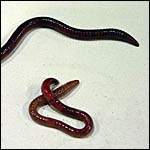 |
Found in many areas of tropical Asia. It is not known how long it has been in Hawaii but it is relative common. |
*Pink Earthworm (Lumbricus sp.) ?
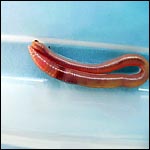 |
Pink earthworm. |
| |
|
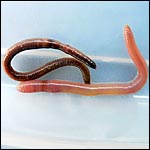 |
Alabama Jumper and Pink Earthworm. Note that the Pink Earthworm is larger in diameter in proportion to length as well as being a different color. |
Planaria (aka Flatworm)
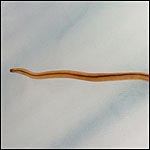 |
|
| |
|
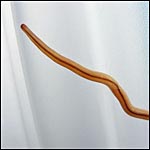 |
This planaria is about 6 cm long. Per Lu Eldredge of the Bishop Museum: “This looks like Bipalium kewense, an introduced land planarian (Tricladida).” |
Horsehair Worm (Gordiaceae)
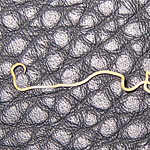 |
|
| |
|
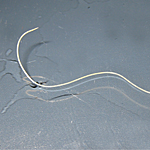 |
This worm was found crawling up a wall just after a rain. The worm is about 10 cm (4 inches) long and less than a 1 mm in diameter. These long, thread-like roundworms are occasionally found on sidewalks or patios, in water-troughs and domestic water supplies, on cabbage plants and garden soil, and in the body cavities of various pest insects. Horsehair worms are not harmful to humans, domestic animals, or plants. Adult worms are free-living and non-parasitic. Immature stages are internal parasites of grasshoppers, crickets, cockroaches, beetles, and other insects and millipedes and centipedes. |
|
|